Improving Indoor Air Quality: Strategy & Use of Air Purification Systems
Article written by Steve Froelicher, PhD
We spend most of our days indoors. As such, we would like to have control over what we breathe. A predictable mixture of volatile organic compounds (VOCs) and formaldehyde pervade our breathing space due to societal use of household products, building materials, and fuel mixtures. Mix in other VOCs present due to life choices and the VOC load present in indoor air can result in an uncomfortable breathing environment. We can improve this environment by source identification (i.e., IAQ testing) followed by source reduction or source removal, but in many cases, the only way to pursue further remediation is to massage our internal environment with some form of air purification.
Besides the presence of VOCs and formaldehyde, air can be a complex matrix (Figure 1). According to a 2009 Environmental Protection Agency (EPA) report, indoor air pollution is among the top five environmental health risks[1]. Particulate matter, allergens, tobacco smoke, pet dander, to name a few, along with VOCs and formaldehyde, can all affect occupant health. Therefore, the goal of indoor air quality management is to provide a safe environment for breathing and living.
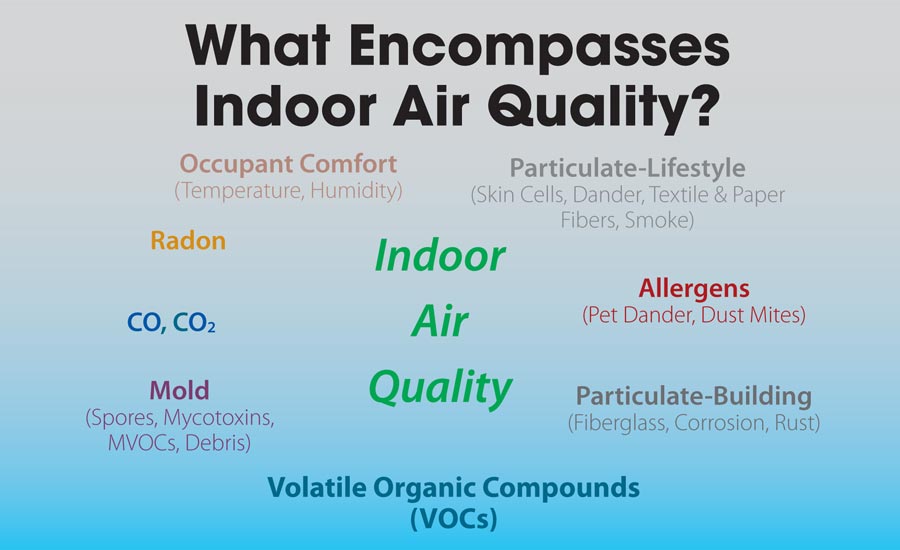
Figure 1 Indoor Air Quality Matrix
The first step in IAQ management is to understand the “baseline” VOC and formaldehyde levels, which can usually be obtained through appropriate IAQ testing procedures. This baseline level would normally load established from local ambient outdoor levels and from the building infrastructure (i.e., materials of construction (MOC) + carpeting + furnishings + other). The local ambient outdoor levels are usually low for VOCs and formaldehyde. The VOC and formaldehyde load from the building infrastructure can be quite high within the first six months of new construction but generally levels off to a consistent level. Recent emphasis on LEED standards[2], for instance, can result in efforts to keep the “baseline” level low through proper selection of MOC.
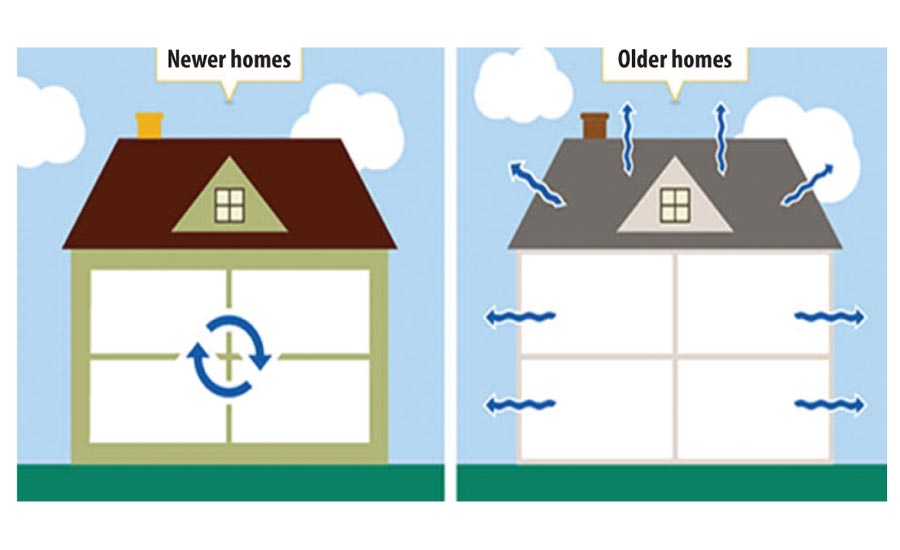
Figure 2. Sometimes efficiency is maxed out at the expense of good ventilation.
Beyond this “baseline” level, the indoor air environment can be a shifting “snap-shot in time” of occupant exposure to VOCs and formaldehyde. This ever-shifting variation of components is instantly impacted through the use of personal care products. Cleaning products, new construction, home repairs, and new product installation such as carpeting, flooring, plumbing, and furnishings.
The second step in IAQ management is to remove or reduce the source of contamination. Many ignore this step and instead try to improve the indoor environment by jumping to remediation techniques. The remediation techniques, such as two-stage air filtration (particulate and VOC removal) can yield immediate improvements. But without an initial effort of source removal, the improvement can be temporary. Filtration devices can overwhelmed and lose effectiveness rapidly.
Source removal, if practical, is the best option. For instance, placing cleaning products, paints, and other VOC-yielding household products into sealed storage containers. And even relocating these products to the garage or outdoor storage shed, can help to reduce the “baseline” VOC and formaldehyde level.
The next best approach to improve indoor air quality is to improve ventilation and add fresh outdoor air where practical. Newer homes built more efficiently (Figure 2). Energy efficiency is maximized but sometimes at the expense of good ventilation. Indoor air quality can improve by adding 10-15% fresh air to the home return air.
After source removal and potential ventilation, improvements have been considered and implemented. The final stage of indoor air quality improvement can affect by installing portable or permanent air filtration or air-cleaning devices. The expense is greatly influenced by the extent of installation. Whole house systems are obviously going to be much more expensive and potentially risky. Because of the complete renovation of the HVAC system of the house.
It is potentially risky only in the sense that the possibility exists that only minimal improvements occur in IAQ in the structure despite the expensive installation. Portable air filtration devices can be a lower-cost alternative but are usually effective only in the immediate vicinity in which they are located. Consultation with local HVAC experts recommended.
The appropriate air filtration device can be chosen by considering what remediation effect desire. The different types of devices have been conveniently discussed and reviewed in a recent monograph[2,3]. Two types of air cleaners can remove particulate matter from the air – HEPA filters and electronic air cleaners. Particulate removal relies on five different types of mechanisms; sieving, interception, diffusion, inertial impaction, and electrostatic attraction. The latter, electrostatic attraction, removes charged particles by attaching to the airborne particulate.
The charged particles then settle faster to nearby surfaces. The minimum efficiency rating value (MERV) is the rating system that portrays the effectiveness of particulate removal in air filters (pleated and HEPA). The higher the MERV rating the more expensive the filter and likewise, the smaller the particle that can be removed from the air. A MERV rating of 20 is required for hospital laboratories where contaminant particles are controlled to a value of < 0.30 micron. The best MERV ratings for home use are 11-13 and lead to the removal of greater than 95% of 0.30 – 1.0-micron particles (Figure 3).
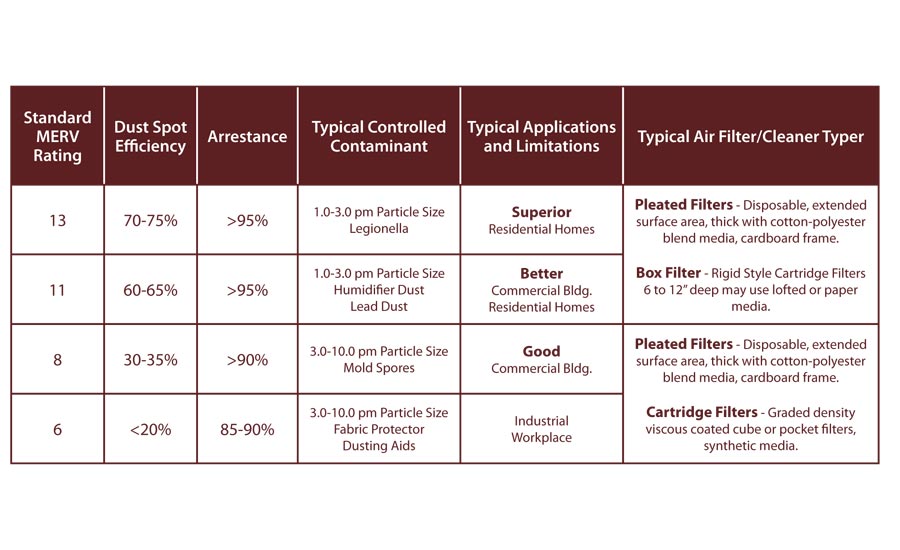
Figure 3 The best MERV ratings for home use are 11-13.
A two-stage filter required for particulate, VOC, and formaldehyde removal. Units exist on the market that combines the HEPA filtration with a carbon-based adsorbent for removal of VOCS. The effectiveness at removing the VOCs and formaldehyde affected by airflow rate and velocity through the sorbent, the concentration of contaminants removed. The total available surface area of the sorbent, and the temperature and relative humidity of the gas stream.
Carbon bed adsorbents can eventually saturate with VOCs and suffer breakthrough, meaning that VOC removal is no longer effective. Some devices use UV light to deactivate or destroy pollutants. For instance, UV Germicidal Irradiation cleaners operate in the 200-280 nm UV range and expose the VOC stream to radiation. That is effective at destroying bacteria, allergens, and other biological contaminants. An example shown in Figure 4. These units frequently limited in effectiveness due to the amount of time of exposure to the UV light. Some molds and bacterial spores require higher energy and longer exposure times.
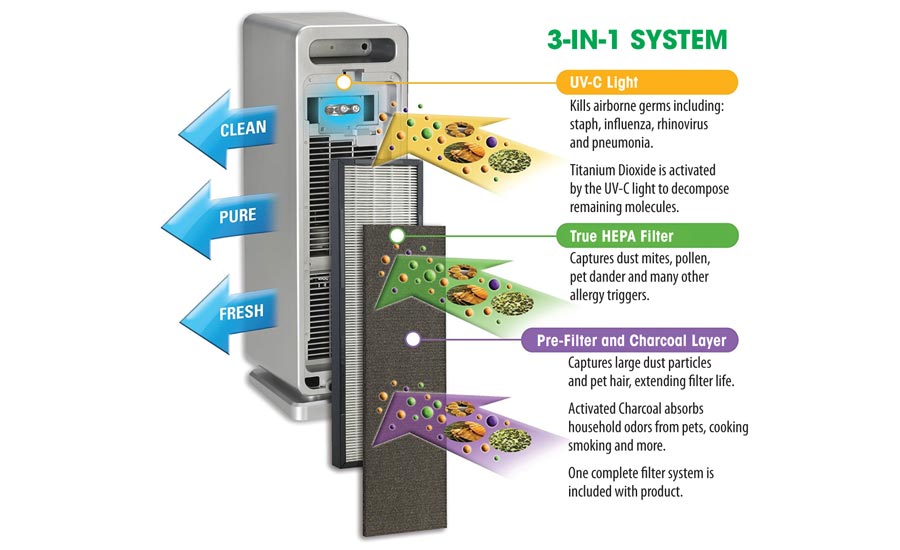
Figure 4 An air cleaner that incorporates a HEPA filter, carbon bed adsorbent, and UV radiation.
Photocatalytic oxidation (PCO) technology-based air filters combine UV light with a titanium oxide coated filter, which serves as a photo-catalyst. Highly reactive hydroxyl radicals and superoxide ions generate which help to destroy bacteria, pollutants, and allergens. The mechanism for PCO illustrates in Figure 5. Water and carbon dioxide generated from the decomposition process.
The use of UV radiation and PCO-based technology are only two examples of innovative air cleaner technologies. Air cleaners exist which generate small amounts of ozone to aid with air purification. Ozone can cause collateral damage of MOC and by-products such as formaldehyde can be generated[5].
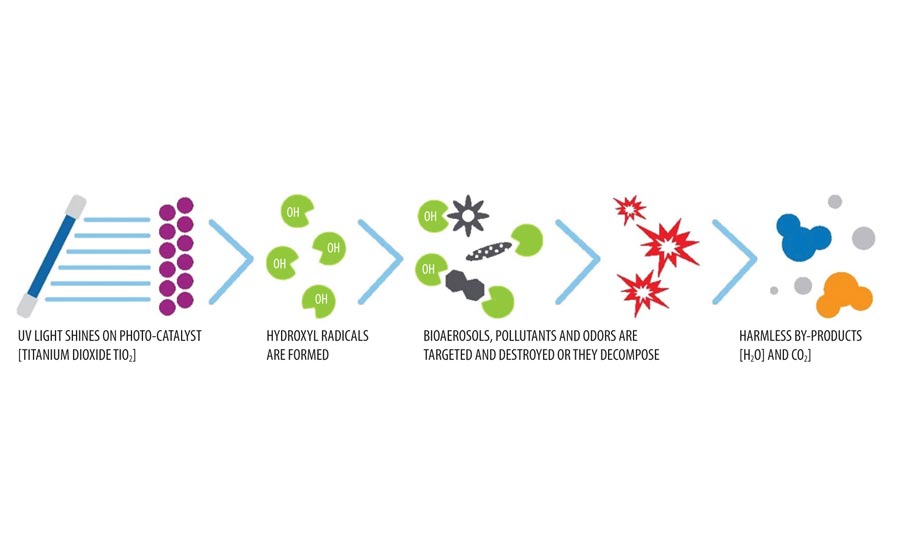
Figure 5 Mechanism for photocatalytic oxidation of airborne contaminants.
In general, the use of air cleaner technology has a positive impact on IAQ. However, if the IAQ problem is severe, filters can quickly clogged and can reduce the ventilation rate and air movement. Also, secondary by-products from newer cleansing technologies may be part of the return air from the air cleaning unit.
In conclusion, we can effect positive change in indoor air quality by contaminant source removal, improved ventilation techniques. And the proper selection of remediation tools based on careful consideration of the “baseline” contaminant levels in the indoor structure.
